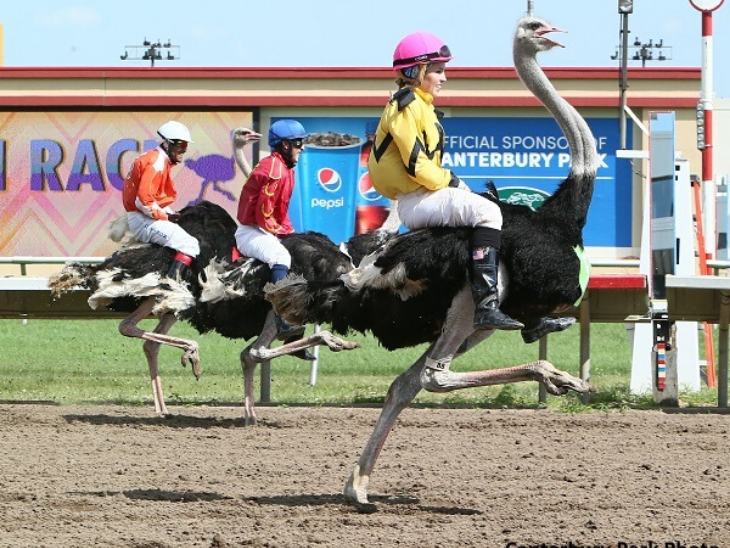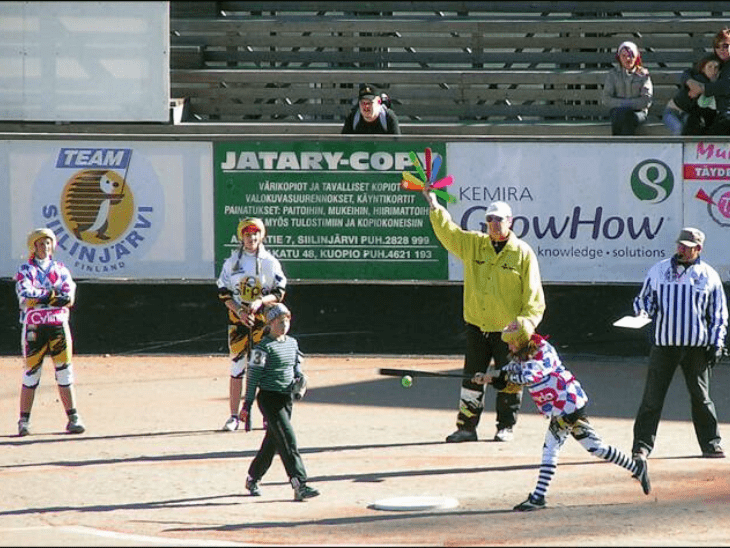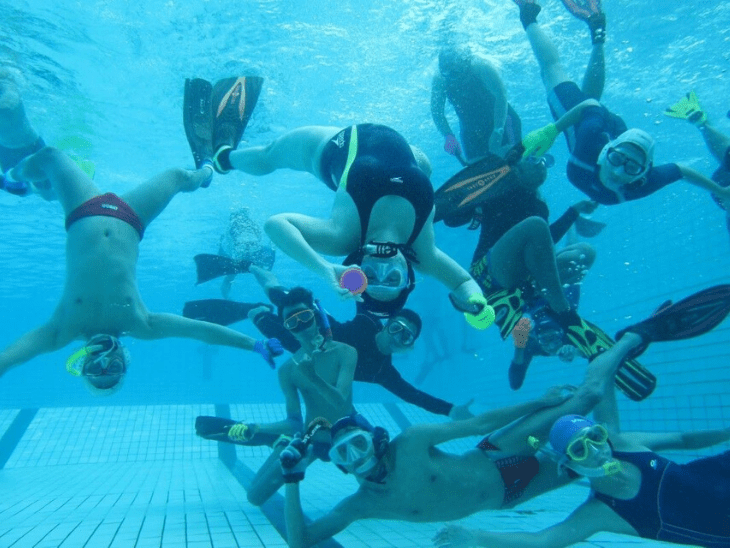We inhabit an odd, odd world—a fact made generously clear when we examine how different cultures define the word “sport.” Ready have a trip to England for final ironing, in which competitors carry out the duties of domestic life while dangling from a cliff or strapped to the top of a moving vehicle and then Germany brought us a cycle ball, which is soccer played on bicycles with no brakes. These sports may be strange and hard to believe, but that's what makes them so great and hilarious. No matter where you go in the world, there’s an intriguing pastime to suit your fancy. So pack your bags, hop on a plane, and go watch a sport that defies logic and oftentimes gravity.

Ostrich, in South Africa, Ukraine
Ostrich racing originated in Africa and eventually made its way over to the US. It can reach a surprising speed of 43 miles an hour, and their legs can reach up to 16 feet in a single stride. During a game of ostrich racing, people sit on ostriches and race them around a track.

Chess boxing, Based in Netherland
As its name might suggest, chess boxing is a combination of two traditional sports: chess and boxing. The game alternates between serious games of chess and intense rounds of boxing. Chess boxing is a hybrid sport that combines the sport of boxing with games of chess in alternating rounds. Chess boxing fights have been organized since early 2003. The sport was started when Dutch artist. The sport has become increasingly popular since then.[To succeed players must be both skilled chess players and skilled boxers. The object of chess boxing is to either beat your opponent in alternate rounds of chess or boxing. Matches can be won from either discipline with the chess coming down to check mate or forfeit and the boxing in either a stoppage or points decision.

Pesäpallo, Finished Baseball, in Finland
Pesäpallo, the national sport of Finland, was born from the desire to carve a distinct national identity in the early days of the country’s statehood. It retains some strong similarities with baseball, while still bearing its own unmistakable identity. A favourite of men and women alike, pesäpallo is the sport of the whole Finnish nation.

Underwater hockey, in the Uk
Underwater hockey is exactly what it sounds like — a game of hockey, but underwater. It was invented in the UK in 1954. The game consists of 15 minutes halves and a three minutes half time. Each team is allowed one 60 seconds time out per half. The game clock stops for any infringements in the last 2 minutes of the game.

Toe wrestling, in England
So to give everyone some hope, they created a new sport – toe wrestling. The idea was that if they invented a new sport, the English would be the best in the world at it. The game is a bit like arm wrestling – competitors play with bare feet and link toes. In the very disturbing game of toe wrestling, two people lock feet and battle with their toes, attempting to pin each other's foot down.

Zorbing, in England
Although it's one of the strangers extreme sports out there, zorbing is actually pretty simple: Climb inside a big inflated ball and roll down a hill. If it sounds strange, you're right. If it sounds like fun, you're definitely right. The plastic ball is double-walled, so the rider (sometimes harnessed in, sometimes not) bounces around and gets the thrill of speed, but is protected from the full impact of hitting the ground repeatedly. Zorbing has been around since the mid-1990s when David and Andrew Akers came up with the idea in Rotorua, New Zealand. Since then, they've expanded the business globally, opening locations in seven countries, including the United States. Of course, they've generated lots of competition, with names like globe-riding, sphering, orbing, and the more generic hill-rolling.

Octopush, in US
This subaquatic sport began in 1954 to help members of a British diving club stay active in the winter. Octopush, also known as underwater hockey, bears much resemblance to its aboveground relative but with several striking differences. The first is that the puck weighs three pounds so it can glide smoothly along the bottom of the pool. Secondly, competitors don snorkel masks and carry foot-long sticks to launch their assaults on the opposing team’s goal. Finally, as Octopush takes place underwater, players can generally do little more than dive down and pass the puck to a teammate before coming up for air. While a thriving sport in England, Octopush has yet to make any real waves—pun intended—in the U.S.

Fireball Soccer, Indonesia
Picture your average game of pick-up soccer. Now imagine that the ball is not synthetic leather and air but a coconut soaked in kerosene and then set on fire. This is the basis of the aptly named fireball soccer, in which players welcome the month of Ramadan by coating themselves in salt and nonflammable spices and kicking a literal ball of fire with their bare feet. Although the match itself is certainly the highlight, the pre-game rituals hold just as much importance for the players. After a month of fasting and prayers, they must train their spirits to make their bodies impervious to flames. Kids, please don’t try this at home.

Sholve racing, in New Mexico
Shovel racing is a snow sport that includes riders racing down a snowy hill riding on a shovel. The sport is practiced on typical snow shovels as well as on modified shovel based sleds. The riders sit on the shovel facing the handle and lean back with their feet pointed forward. The top speed achieved by the elite shovel racers can range up to 70 miles per hour (112 km/h). Riders usually wax the underside of the shovel to increase its speed. The sport has its roots in the 1970s in New Mexico's ski resorts. The inspiration for the sport came from the ski resort workers who used shovels as sleds to move from one location to another. The sport gained massive popularity in 1997 after it was featured in the Winter X Games, an extreme sports event in the US, but was later removed owing to safety and liability concerns.

Bo-Taoshi, in Japan
Bo-taoshi, or “pole-toppling,” is a sort of full-contact capture the flag—where the “flag” is not only unhidden but a giant pole surrounded by a swarm of 75 players charged with defending it. And that’s only half of one team. The other half is waging war on the opposing team’s pole, attempting to knock it to a 30-degree angle relative to the ground. As both teams attack and defend simultaneously, it’s a race to see which can be the first to topple the other team’s pole. The sport originated in the 1940s, thought to be a training exercise for members of the Japanese military. Today, it’s played on school sports days and during the induction ceremony for new cadets at the National Defense Academy of Japan.
